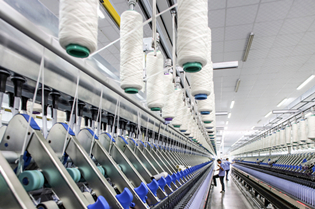Non-ferrous metal industry, a highlight of Inner Mongolia
In addition to resource reserves, the autonomous region has an ample and stable power supply, which guarantees the development of high electricity-consumption industries like non-ferrous metal production and cloud computing.
To date, Inner Mongolia's production capacities for electrolytic aluminum, electrolytic copper, zinc and lead are 2.35 million tons, 650,000 tons, 510,000 tons and 240,000 tons, respectively. The output value of the enterprises above a designated size in the non-ferrous metal processing industry is 214 billion yuan, accounting for 11.8 percent of gross industrial output value of enterprises above a designated size in the whole region.
Industry extension a road to development
Industry extension and upgrade is a road for Inner Mongolia's non-ferrous metal manufacturing and processing, according to insider opinions. There are two key points in working towards industry extension and upgrade, to strive to transform resource advantages into economic advantages and to apply and research advanced technologies for better efficiencies and benefits.
Additionally, the autonomous regional government is set to improve the policy support of the non-ferrous industry, such as support of non-ferrous metal prospecting, power supply and capital. Awards policies are implemented in the field. The government will put more importance on park infrastructure, pollution control and prevention equipment to effectively control and prevent heavy metal pollution.
A reserve system is planned for key non-ferrous metal by the government. It also plans to set up a non-ferrous metal trade platform at a suitable time.
Apart from these measures, the region strives to push forward the integrated development of the non-ferrous metal industry's procedures to explore new energy utilization in metal manufacturing. By taking full advantage of energy, it actively undertakes the aluminum industry transfer in accordance to the coal-electricity-aluminum integrated development model.
The deep processing of aluminum, magnesium, copper, lead and zinc are given significant importance in the region. Also important are materials required by strategic emerging industries and used in the production of shortage products.
By 2017, the region's production capacity of non-ferrous metal will be 14 million tons, and the deep processing rate of lead, copper, zinc and magnesium is estimated at over 50 percent. The deep processing rate of electrolytic aluminum will be more than 70 percent.



 Print
Print Mail
Mail





